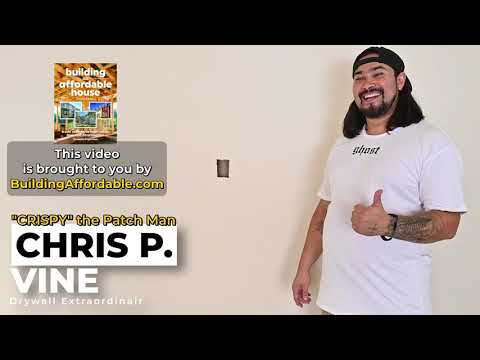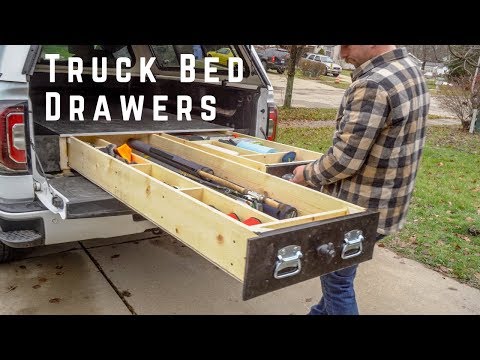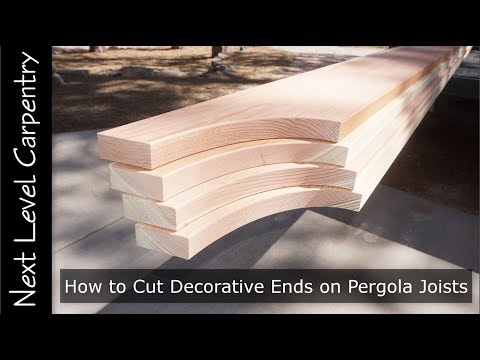Poking holes in plaster walls can leave bare lath flapping and loosens the plaster surrounding the opening. This time-tested repair method restores the plaster wall to good-as-new condition.
Below is a lightly edited transciption of the audio track.
Hi. I'm Rory Brennan, owner of Big Wally's Plaster Magic and Preservation Plastering. Been repairing plaster for 30 Years. Today what we're going to do is we're going to repair what happens when you put a duct through a plaster wall and you don't pay attention to the way it's built. There are easy ways to do this and hard ways to do this; this has been done the hard way, but we can fix it. That's the good news. Okay, let's go.
Reattaching the Lath
First thing we do is we want to take the grate off so we can see what we have to do to repair this. There we go. It's a couple things we need to do. We need to tie this [loose] lath down, put another piece of lath in behind here and glue this plaster to it. Then we need to stabilize all the plaster around here, and glue that right back to where it was.
First thing we want to do is to reattach these two pieces of wood. I'm going to pre-drill this one so it doesn't split the lath any further.
Okay, those are nice and firm.
Let's measure up and see what we can do for wood lath in here. Unfortunately, when they cut the lath off to put this duct in, they cut it off at the stud, so there's really no way to attach it here. So what I'm going to have to do is … glue the lath to the back of this plaster to hold it in place. But that's good because it'll reinforce everything.
Okay, I'm going to cut this to, say, 14-1/2 inches. I'm going to stick this in here and do a couple things: I'm going to attach it to this piece of framing here, and I'm going to try to attach this this duct to it as well. Oh boy, that tightens it up real nice right there, real nice. So, I'm going to back [the screw holding the top of the duct] off a little bit so I can get plaster in behind it.
Prep the Loose Plaster
Now that we have that lath in there, we're going to clean out this is key right there, and then we're going to do the adhesive work around the edge. It doesn't take much to get these keys out of here, but they’ve got to be gone for the plaster to attach.
The plaster is loose all the way around, because when they cut this off with a reciprocating saw, it jiggled all the plaster and that's what made it fall off. So, because of that you can see how loose it is. What we're going to do is we're going to reattach the plaster to every lath. [The lath] is easy to find. It's important the type of type of bit that we use to drill these holes. This is a 3/16-inch masonry bit, [which] will not dull as it goes through the plaster, but it will not drill through the wood lath. When you drill through the plaster, then it stops.
It's important to get as much dust out of there as you can, so that's why we vacuumed the holes. This is a conditioner that's a very important step in this whole process. What it does is it gives the adhesive a good surface to bond to. It's very necessary. Okay, what you do is you put [the sprayer nozzle] on spray … and you put that tip right up to the hole and you spray in.
While I have the conditioner Out, I'm going to take and spray down the lath and the edges of the raw plaster, which helps seal it and helps the new patching plaster that I put in bond to the old stuff and to the lath. Okay, we'll let that conditioner set up before we put plaster on it.
Okay, now I'm going to take [the sprayer nozzle] back to stream and [spray] into the holes. Now, we're going to put conditioner on this side as well. There we go. Now we're ready to do the adhesive work. It's important after you finish using the sprayer to run clean water through it so it doesn't clog up and you only get one use out of it. There you go.
Inject Adhesive
What we're going to do next is inject A specially-designed adhesive. This is designed specifically to reattach old plaster to wood lath, brick, or masonry. Now in order to do, that we had to drill these holes, and we had to put the conditioner in that would seal the old plaster. They give the adhesive a good surface to attach to.
Now we're going to take and just cut off a little bit less than a quarter inch of the tip, open it up so it looks about like that. Then we want to squirt in just enough so we can see the adhesive peeking out. We don't want any more than that. Okay, there we go; we can just see it right over here, like that. See that? Release the pressure [on the caulk gun], and move to the next hole. Every once in a while, it's good to rinse off the tip of your adhesive cartridge.
Next thing we want to do is take a damp cloth or rag and wipe down the excess adhesive. It's important to do this now well it's still soft, then rinse out your rag so the adhesive doesn't solidify it.
Clamp the Plaster
[Now] we need to clamp this, because this plaster is more than a quarter inch away from the lath. So we have to clamp this all together. We use these washers and screws, which are supplied from the Big Wally kits. You clamp it till it comes into soft contact—you can see a little bit of adhesive coming out there and that's great. So I'm going to put another one in right here—soft contact, you don't want to squeeze the adhesive out—and I'm going to put another one in down here. You do not need to put one in every hole because the plaster has its own integrity.
Now, because I put in this new piece of lath, I'm going to include it. I'm going to screw that lath to the plaster, and once the adhesive sets it'll be solid. Over on this side we're pretty tight … a little loose right there, so let's put another one in there When this adhesive sets, the plaster will be attached as firmly it was when it was first done.
Okay, now I'm going to get the rag and I'm going to wipe that down and we'll make some plaster and we'll fill in the hole.
Add New Plaster Scratch Coat
Now it's time to fill in this hole. We have for sale and Big Wally's Plaster Magic, we have a patching plaster that's specifically designed to patch old plaster. It's not like a modern plaster; it’s made especially for this purpose. What you do is you put some water in a bucket like this—a mixer like this can be bought at your hardware store—and you pour in the plaster until it comes to a peanut butter-like consistency. If the plaster is too loose after you mix it up, it falls off, and if it's too stiff, it'll fall off. You'll know when it's the right consistency. That's too loose, we need to stiffen that up, so we're going to add a little bit more plaster, just a little bit. Now, see that's perfect consistency. When you mix this up you want to make sure it's like a peanut butter-like consistency. The idea is that when it's about ½-inch thick, and you turn it upside down, it'll stay in place. If it's too loose, it'll fall off and if it's too stiff it'll fall off.
Okay, what we're going to use is very nice tool: this is called the “bucket trowel” and we use it for getting plaster out of buckets. What we're going to do is are going to just take this up like this, hold it up and smear the plaster into [the bare lath]. You want to make sure to get plaster underneath this ductwork. We have to leave enough room in … the depth of the patch in order to put the next layer on and fill it out completely. And that will happen just after this sets, in about an hour. Make sure you tuck [some plaster] right in behind [the duct flange].
Okay, now we've got the hole filled in. I'm not going to worry about all this extra rough Plaster right now. After its set up it'll scrape off really cleanly and allow us to add the next layer on. But what I’m going to do is I’m going to scratch this to allow the second layer to bond onto it really well with a nice mechanical bond. Traditionally a plasterer would use this Tool, but they're not easily obtainable for most people. So what I have found is a tile adhesive spreader [which] is notched to give some texture. This works perfectly in this instance. What we're going to do is we're going … to just give it some nice texture to allow the second coat to bond right on to it. Okay, we're done until this sets in about an hour, two hours.
Add Finish Coat of Plaster
We have applied the scratch coat of plaster to the patch and we did the adhesive work. The plaster sets up in about an hour, but we came back the next day because I wanted the adhesive to set up as well. That way we can do the fill coat and just be done with the job.
Okay, so first thing we do is take out the washers that clamped the plaster. As you can see, earlier this this plaster was bouncing all over the place, it is now secure in and intact.
Okay, now [we’re] going to scrape off the high points of the plaster and trim it up around the edge. As you can see right here, it was such a small space that we filled it in with one coat of plaster.
Now that we've got that all scraped off and trimmed back, I'm going to loosen this [top] screw [in the duct flange] a little bit so I can tuck the plaster in behind it. Now we mix the plaster.
I mix the last batch of plaster mechanically with a mixer and a drill, but I'm going to do this one by hand just to show you how it's done. It's a pretty simple operation. Put a little bit of water in the bucket, then add the plaster and just mix it up. See how this is a little stiff? I'm going to add a little bit more water to it. It's always better to add a little bit of water at a time because it's very difficult to get water out of this stuff. Okay, good to go.
Because this has a set overnight and dried out a little bit, we're going to spray down with a little bit of water so it bonds better. All it needs is a little spritz like that. I'm using what's called a “midget trowel” because it's a small trowel and it it's easier to control. You can probably get those at any of the big home supply stores. This could also be done with a putty knife, it just takes a lot longer with a putty knife.
The most important thing is to get the plaster up onto your patch. Once it's up, then you can take your time smoothing it out. Got that roughed in, scrape around the edges so it's flush with the original plaster.
Okay, I'm using a 3-inch putty knife because it's easy to maneuver and it helps scrape down the edges of the wet plaster quickly and easily. It's okay to leave it rough like this because you're going to scrape it down and even it out after it sets. We'll be back in an hour to do that, then we'll put the skim coat of joint compound on it and your patch will be finished.
Skim Coat of Joint Compound
Okay, now that the second coat has hardened, we want to scrape it down and clean it up and get ready to put the finish coat of joint compound on. Scrape it down everywhere it hits the old plaster.
We've scraped down the base coat plaster that we put in. We're going to put a thin skim coat of joint compound over it to take care of all the cosmetic imperfections, and then we'll finish off with a with a sponge, so there will be no sanding.
So first thing you do is you want to get the material on the wall; once it’s on the wall, then you can smooth it out and make it look good. The idea with joint compound is you want to put it on so thin you can see the wall underneath it. It helps to have different sized knives so you can get every place done. You can use almost any type of ready-made joint compound—they're all pretty much the same thing. All you're using it for is to fill in the cosmetic imperfections. you may have to do more than one coat, but if you do thin coats and finish it off with a sponge and they'll be no sanding involved.
Sponge Finish—No Sanding
Now that we have skimmed the joint compound onto the plaster, we're going to finish it out with a sponge. It's real simple: with a damp sponge you go very lightly over it and it eliminates the need for sanding. The advantage of using sponging over sanding is that eliminates the dust, which cuts down on the amount of work that you need to do and we want to keep this as simple as possible. So, if we wipe it down with a sponge, there's no cleanup afterwards and it looks perfect.
Now that the plaster is repaired, we're going to just secure the duct in place and put the grate back over it. Now all we have to do is put the grate on and we'll be finished.
All the materials that were used in this repair you can buy a PlasterMagic com. If there are any videos you'd like to see, email us at info@plastermagic.com and we'll do our best to give you the video that you want. Thanks
—Rory Brennan, owner of Preservation Plastering, maintains a YouTube channel with many plaster-repair how-to videos, including a plaster-repair system he developed called Big Wally’s Plaster Magic.











